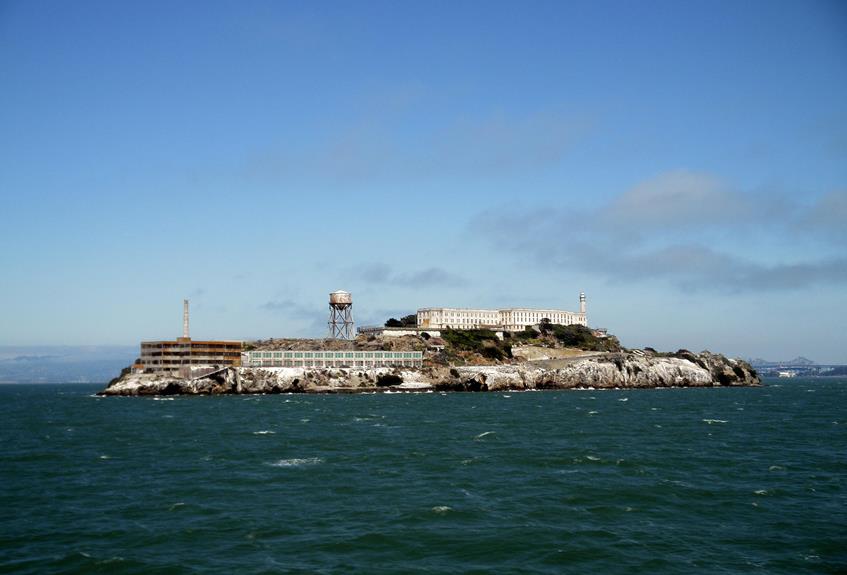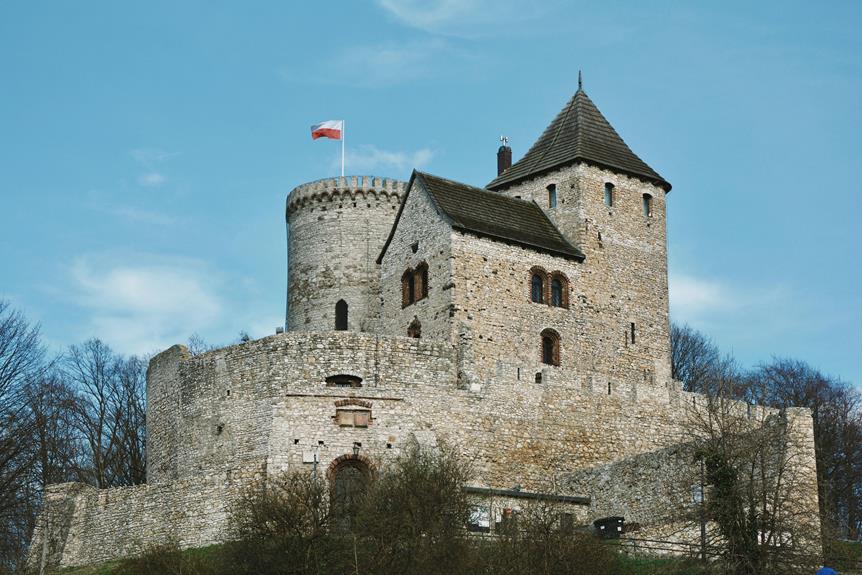The imposing walls of Eastern State Penitentiary hold within them stories of isolation, redemption, and a dark legacy that continues to intrigue many. As one navigates through its corridors and peeks into the shadowy cells that once housed infamous criminals, a sense of unease and curiosity intertwine. However, it is not just the history or the architecture that captivates visitors; there is an air of mystery that lingers, whispered tales of restless spirits and unexplained phenomena that add an extra layer of complexity to this renowned landmark.
Key Takeaways
- Established in 1829 in Philadelphia, Pennsylvania.
- Influential in modern prison practices.
- Notable inmates: Al Capone, Willie Sutton.
- Known for ghostly encounters and paranormal activity.
- Offers unique exploration of history and architecture.
History of Eastern State Penitentiary
Initially established in 1829, Eastern State Penitentiary in the United States stands as a seminal institution in the domain of prison history, particularly regarding its origins and rehabilitation methods. Founded in Philadelphia, Pennsylvania, Eastern State Penitentiary was one of the first prisons in the world to implement the revolutionary system of separate incarceration, aiming not only for punishment but also for the reformation of inmates. This marked a significant departure from the common practice of corporal punishment prevalent in prisons at that time.
The penitentiary's approach to rehabilitation was rooted in the belief that solitude and reflection were essential for prisoners to achieve penitence and reform. Inmates were kept in individual cells, isolated from one another, to contemplate their crimes and seek spiritual redemption. This emphasis on introspection and repentance was a radical departure from the brutal and overcrowded conditions found in many contemporary prisons.
The innovative rehabilitation methods employed at Eastern State Penitentiary influenced the development of prison systems worldwide, inspiring a shift towards more humane treatment of prisoners and a focus on their potential for redemption and rehabilitation. This historical legacy continues to shape modern penitentiary practices, reflecting a broader societal evolution towards a justice system that seeks to balance punishment with the opportunity for personal growth and transformation.
Architecture and Design Features
The architectural layout and design features of Eastern State Penitentiary in the United States exemplify a unique blend of functionality, symbolism, and innovation. The prison layout was designed to prioritize isolation and penitence, reflecting the Quaker principles of reflection and regret for past actions. The radial design of the prison, with cell blocks emanating from a central surveillance hub, allowed for a new level of centralized security and monitoring. This design not only facilitated the management of inmates but also symbolized the watchful presence of authority.
The cell structure at Eastern State Penitentiary was revolutionary for its time. Each cell was designed to house a single inmate, promoting solitude and reflection. The small, sparse cells contained a skylight, providing the only source of natural light, further emphasizing the isolation intended by the prison's founders. The design aimed to encourage prisoners to confront their actions and seek spiritual redemption through quiet contemplation.
Furthermore, the castle-like appearance of Eastern State Penitentiary, with its soaring stone walls and imposing towers, served as a stark reminder of the consequences of criminal behavior. The design was meant to instill a sense of awe and intimidation in both inmates and visitors, reinforcing the prison's role as a place of punishment and reform.
Notable Inmates and Escapes
Among the notable inmates housed within Eastern State Penitentiary in the United States, several individuals left their mark through daring escapes and infamous criminal histories. One such famous criminal was Willie Sutton, a notorious bank robber known for his multiple successful prison breakouts. Sutton managed to escape from Eastern State Penitentiary not once, but twice, using a variety of cunning tactics and tools to outsmart the authorities.
Another infamous figure who resided within the walls of Eastern State was Al Capone, one of America's most notorious mobsters. Capone, known for his involvement in organized crime, served time in Eastern State for carrying a concealed weapon. Despite his criminal empire outside the prison walls, Capone was unable to orchestrate an escape from Eastern State Penitentiary.
Additionally, Slick Willie, whose real name was William Russell, was another inmate who attempted a daring escape from Eastern State. Russell, a notorious burglar, made a bold attempt to break out of the prison but was ultimately unsuccessful and was captured shortly after his escape.
These famous criminals and their attempted prison breakouts add a layer of intrigue to the history of Eastern State Penitentiary, showcasing the lengths to which inmates would go to regain their freedom.
Hauntings and Paranormal Activity
Reports of eerie occurrences and unexplained phenomena have long surrounded Eastern State Penitentiary, contributing to its reputation as a site of hauntings and paranormal activity. Visitors, staff, and even paranormal investigators have reported ghostly encounters and supernatural phenomena within the prison walls. One of the most famous tales is that of 'The Phantom of Cell Block 12,' a shadowy figure that is said to roam the corridors at night, leaving a chill in its wake.
Many attribute the hauntings to the prison's dark history of solitary confinement and harsh punishments, believing that the tormented souls of former inmates still linger within the decaying walls. The prison's imposing Gothic architecture and crumbling cell blocks only add to the eerie atmosphere that surrounds the site.
Visitors to Eastern State Penitentiary have reported hearing disembodied voices, feeling sudden drops in temperature, and witnessing unexplained shadows moving throughout the prison. Some have even captured apparitions in their photographs, further fueling the belief that the prison is a hotbed of paranormal activity.
While skeptics may dismiss these accounts as mere superstition, the sheer volume of reported experiences from credible sources lends credence to the idea that Eastern State Penitentiary may indeed be haunted. Whether you believe in ghosts or not, a visit to this historic site is sure to send chills down your spine.
Visiting Eastern State Penitentiary
Visiting Eastern State Penitentiary offers a unique opportunity to explore the intersection of history, architecture, and the criminal justice system. As one of the most historic prisons in the United States, Eastern State Penitentiary attracts visitors from around the world seeking to immerse themselves in its rich past and architectural significance.
Tourist experiences at Eastern State Penitentiary are multifaceted, ranging from guided tours that explore the prison's notorious inmates and daring escapes to self-exploration of the crumbling cellblocks and eerie solitary confinement cells. The prison's Gothic architecture, with its soaring radial walls and haunting guard towers, provides a stark backdrop for contemplating the harsh realities of incarceration in the 19th and 20th centuries.
Moreover, a visit to Eastern State Penitentiary prompts reflection on the history of prison reform in the United States. Originally designed with the revolutionary concept of rehabilitation through solitary confinement, the penitentiary later faced criticism for its inhumane conditions and lack of effective reformative practices. This evolution in penal philosophy mirrors the broader shifts in societal attitudes towards punishment, rehabilitation, and the rights of prisoners.
Frequently Asked Questions
What Was the Daily Routine Like for Prisoners at Eastern State Penitentiary?
The daily routine for prisoners under the system of prisoner rehabilitation often involved strict adherence to solitary confinement techniques. This regimen aimed at isolating individuals to encourage reflection and penitence.
Schedules typically included limited social interaction and focused on individual introspection and reformation. These routines were designed to promote self-improvement and moral development through a structured and disciplined approach, aiming to facilitate prisoners' eventual reintegration into society.
Are There Any Underground Tunnels Beneath Eastern State Penitentiary?
Exploring rumors of hidden passageways, underground exploration often reveals secrets of historical structures.
In many cases, tales of underground tunnels beneath old buildings spark curiosity and intrigue. However, verifying the existence of such tunnels requires meticulous research and investigation.
Utilizing advanced technology and historical records, researchers can shed light on whether these hidden pathways truly exist beneath the surface, providing a deeper understanding of the site's history and architecture.
How Were Inmates Punished for Breaking the Rules at Eastern State Penitentiary?
In correctional facilities, inmates who violated rules faced various forms of punishment. Solitary confinement, where individuals are isolated from others for extended periods, was a common disciplinary measure.
Additionally, physical punishments such as flogging or forced labor were utilized to maintain order and deter misconduct. These punitive actions were intended to instill discipline and adherence to regulations within the prison environment, emphasizing consequences for rule-breaking.
Is There Any Evidence of Secret Passages or Hidden Rooms Within the Prison?
Explorations into alleged hidden chambers and secret passageways have captivated many. Rumored secret passages often pique curiosity, leading to extensive investigations. Such rumors can stem from historical contexts or architectural peculiarities.
While some secret rooms have been uncovered in various structures, claims of hidden chambers must be approached with caution, as they may simply be product of myth or folklore. Thorough research and empirical evidence are necessary to confirm the existence of such features.
Are There Any Documented Cases of Inmates Being Wrongly Convicted at Eastern State Penitentiary?
Within the legal system, innocence cases highlight the fallibility of justice. Documented instances of wrongful convictions serve as poignant reminders of the need for diligent scrutiny in criminal proceedings.
The impact of such miscarriages of justice reverberates beyond individual lives, underscoring the importance of safeguarding against errors that can lead to irreversible consequences. Upholding the principles of fairness and due process is paramount in ensuring that justice truly prevails.
Conclusion
To sum up, Eastern State Penitentiary remains a fascinating example of the history of prison reform and incarceration practices. Its Gothic architecture and storied past continue to intrigue visitors seeking to explore the shadows of its haunted halls.
The penitentiary's reputation for paranormal activity only adds to the mystery and allure of this historical landmark, inviting exploration and contemplation of the complex evolution of criminal justice systems.


